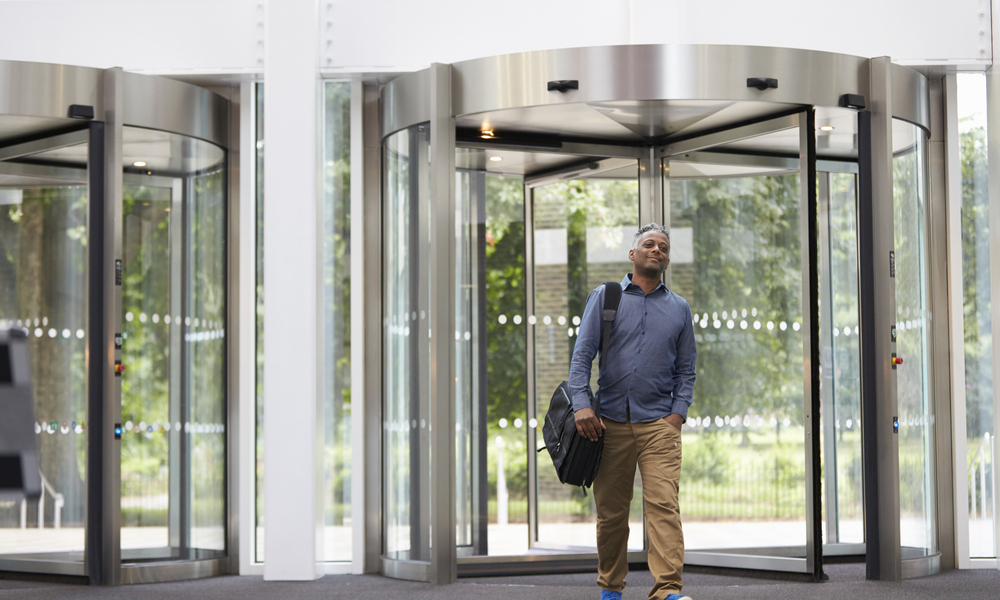
One Group’s Path to Bringing Staff Back to the Office
The Plumbing-Heating-Cooling Contractors—National Association has brought its employees back to the office. To make it happen, the group sought staff feedback, updated employee policies, and upgraded building systems.
Preparing for a safe return to office has been on the minds of a lot of associations lately. The Plumbing-Heating-Cooling Contractors—National Association approached reopening by taking staff concerns into consideration, updating its building and employee policies, and communicating often about the process and details.
Based in Falls Church, Virginia, PHCC owns its building. While some organizations have opted to go completely remote, that wasn’t a consideration for PHCC, said Michael Copp, PHCC executive vice president.
“Our members built this building so that their staff would collaborate and develop products and services for them,” Copp said. “We made it clear to the staff that because we own our own building, our preference is to have the staff in here as much as possible. But also understanding that we wanted to make sure we offer some flexibility.”
While the building has been open on a voluntary basis for staff who wanted to come in since last fall, the office fully reopened for all employees July 6. The 26-member staff now is expected to be in the office at least two days a week, with the option to telework up to three days. To create a plan that worked for staff and the leadership, the organization solicited feedback. While using the building was important, communication from staff helped determine how much staff would be in it.
“Last year, around Labor Day, we did a staff survey to take their temperature, to see how they were doing, and find out what was working and what was not working,” Copp said. “We wanted to get a little bit of a sense of what their concerns were. The data we got from that survey is what drove how we proceeded moving forward.”
That survey, combined with what the organization learned about how they work remotely, led to changes in many policies in the PHCC employee handbook.
“Some of the policies weren’t consistent with what we were trying to do,” Copp said. “For example, our teleworking policy was pretty outdated. It used to be you could just telework one day a week.”
The organization also added a $50 monthly stipend to cover internet costs for staff teleworking during the pandemic. And while PHCC decided not to make the COVID-19 vaccination mandatory, it did want to encourage it.
“We have adjusted our policies to include a $100 bonus for employees who get vaccinated because we did not make vaccinations a consideration of employment,” Copp said. “Also, you didn’t have to take personal time to get the vaccine and then recover from whatever after effects.”
Building System Upgrades
To optimize physical safety when staff returned to work, the organization followed federal and state recommendations related to masking of unvaccinated and vaccinated people. PHCC also spent a lot of time and money upgrading systems to reduce the likelihood of viral transmission.
“For HVAC, we did the needlepoint bipolar ionization purification process,” Copp said. “We retrofitted all the HVAC units. We upgraded filters to Merv-13. We completed all the coil cleaning. We set all the controls so that we have the appropriate level of relative humidity.”
Additionally, PHCC strengthened its cleaning regimen and tried to make areas touchless, when possible.
“We invested another $500 a month, on top of what we were already paying, for wiping down and disinfecting the common areas,” Copp said. “That is sanitizing all of the door handles, water fountains, elevator buttons, countertops, all that stuff, and providing the cleaning and disinfectant products for our staff. We also installed touchless faucets in the bathrooms on all three floors. We installed door checkpoints, so people didn’t have to use the knobs to open and close the doors. We did a lot to the building.”
On top of adjustments to policies and building systems, Copp said the organization communicated regularly with staff to give them updates about what they were doing and to try to be responsive to any concerns they had.
“You cannot communicate too much,” Copp said. “And the reason for that is that there is still a lot of fear. A fear of coming into the building, a fear about being laid off. So, my goal has always been to reduce that fear as much as I can and make it easy for them to decide to stay as an employee.”
How is your association getting ready for its reopening? Share in the comments.
(monkeybusinessimages/iStock/Getty Images Plus)






Comments